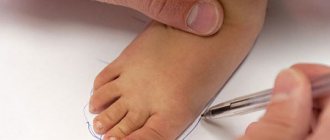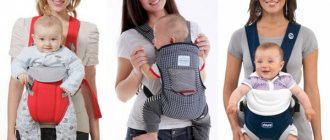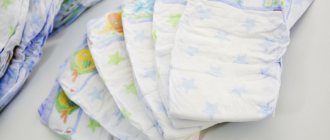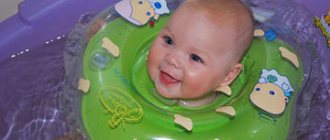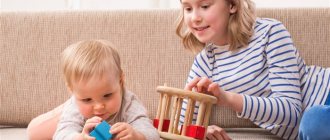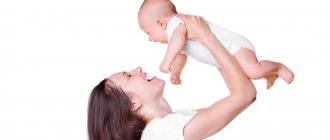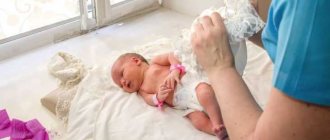How to choose children's shoes for the winter?
What features should be taken into account? Let's figure it out. The child’s foot grows quickly, and its formation occurs during the growth process. The health of the entire musculoskeletal system in adulthood depends on the condition of the feet. Properly selected shoes can avoid serious problems in the future. This is why it is so important to take the choice of children's shoes seriously.
Criterias of choice
- Ergonomics. A special feature of a baby’s foot is the combination of a narrow heel with a wide toe and fan-shaped toes. Compression can lead to poor circulation. It is very important that the forefoot is not tight and the child can move his toes freely. Since the fullness of the legs is different for all children, you should pay attention to the presence of buckles, Velcro and laces that allow you to adjust the volume.
- Material. Children's shoes should be made from natural, breathable materials that have thermoregulating properties. For summer and demi-season shoes, this can be natural, micro-perforated or eco-leather, suede, nubuck, cotton, linen and other textile bio-adaptive materials. For winter - natural sheepskin, wool, felt, polyester, holofiber are good. The texture should be soft and flexible so that the foot bends freely and maintains mobility during any type of activity.
- The sole should be flexible and plastic, and also have shock-absorbing properties that provide a comfortable transition from heel to toe. Bend the product in your hands, applying some force: the sole should form a “boat” with a play of 5-10 degrees. Winter shoes must have an anti-slip coating - this will protect the child from accidental falls and injuries.
- The heel should be firm enough - so much so that it securely fixes the heel, preventing the foot from turning out and swaying when walking from side to side.
- The arch support helps to form the correct arch of the foot, preventing the development of flat feet. Feel the inside of the shoe - there should be a slight orthopedic bulge at the inner edge of the sole, providing comfortable support for the foot. Children under 3 years old do not need shoes with arch support. The role of a shock absorber in children is performed by a fat pad provided by nature, which protects the foot from stress. The presence of an instep support in a baby's first shoes can lead to thinning of the fat layer and weakening of the foot protection. If the child becomes clubfoot at a later age, the instep support is contraindicated until the defect is corrected (consult an orthopedic doctor for advice).
- Heel. This element is often a stumbling block when choosing shoes for girls. Young fashionistas dream of appearing older and ask their parents for high-heeled shoes and boots. You shouldn't follow a teenager's lead. It is necessary to explain to the girl what this threatens in the future: curvature of the foot, varicose veins, incorrect posture, lumbar deflection of the spine with displacement of the hip bones, and in the future - difficulties with childbearing. Until the foot is fully formed, the size of the heel should not exceed 3-4 centimeters. For boys, the sole on the heel side should be 1-1.5 centimeters higher than the toe level.
- Do not pass shoes from an older child to a younger one. During wear, the last “adjusts” to the characteristic features of the gait and the shape of the foot. Wearing someone else's shoes can disrupt the physiological characteristics of the structure of the foot and lead to various types of deformities.
Prevention
To ensure that your baby’s leg develops well and correctly, provide him with additional activities at home. In addition to massage, buy special orthopedic mats with different surfaces. Such a therapeutic massage will help stimulate nerve endings and will be an excellent preventative against possible problems of the musculoskeletal system.
In addition to massage mats, children can be asked to playfully walk on their toes, on their heels, on the inside and outside of their feet. Rolling a 5-centimeter wooden stick will also be of great benefit. Children may enjoy picking up small objects and things with their toes - also a very useful exercise.
Flat feet can be prevented by climbing the wall bars. A useful exercise - cycling not only strengthens your muscles, but also trains your joints, forcing them to work. Walking along curbs, so beloved by many children, also has a useful preventive effect.
How to choose a child's shoe size
A child has to buy shoes quite often because their feet grow quickly. Up to 3 years of age, the foot increases by an average of 2-3 sizes per year. Further, depending on individual development - by 1-2 sizes. Up to 3 years of age, the foot should be measured every 3-4 months.
If you buy shoes that are “true to size”, your baby will very soon feel cramped and will have to curl his toes. If you choose with a large margin, even high-quality shoes will seem heavy and uncomfortable to the child. The leg will slip and “dangle,” which will lead to sprained ligaments and tendons, as well as an increased likelihood of falls, dislocations and other types of injuries.
To choose the right children's shoe size, you should remember the general rule : the growth margin should not exceed 1.5 centimeters of foot length. For winter shoes +0.5 centimeters - based on a warm sock. To accurately determine your child's size, you can measure your foot with a thread from the big toe to the heel. Attach the thread to the ruler and determine the length in centimeters. The table below will help you find out the exact size.
| SHOE SIZE | SHOE SIZE METRIC | FOOT LENGTH, MM | AGE |
| 19 | 13 | 115 | 1-3 years |
| 20 | 13,5 | 125 | 1-3 years |
| 21 | 14,5 | 130 | 1-3 years |
| 22 | 15 | 135 | 1-3 years |
| 23 | 15,5 | 145 | 3-5 years |
| 24 | 16 | 150 | 3-5 years |
| 25 | 17 | 155 | 3-5 years |
| 26 | 17,5 | 165 | 3-5 years |
| 27 | 18 | 170 | 5-7 years |
| 28 | 18,5 | 175 | 5-7 years |
| 29 | 19 | 185 | 5-7 years |
| 30 | 20 | 190 | 5-7 years |
| 31 | 20,5 | 195 | 5-7 years |
| 32 | 21 | 205 | 7-16 years |
| 33 | 21,5 | 210 | 7-16 years |
| 34 | 22,5 | 215 | 7-16 years |
| 35 | 23 | 225 | 7-16 years |
| 36 | 23,5 | 230 | 7-16 years |
| 37 | 24 | 235 | 7-16 years |
Should you wear shoes at home?
You and I know the benefits of walking barefoot, but this statement is valid for uneven surfaces, soil, grass, sand, and so on. At home, the floors are flat and walking barefoot can cause deformation of the feet , disrupt the tone of the foot muscles and interfere with the harmonious development of the legs.
Walking on uneven surfaces , on balls, on sand is useful. Also, for the proper formation of the foot muscles, it is useful to take various objects with your fingers: pencils, balls.
Fitting
You should go to the store for fitting in the afternoon, when the child’s foot is slightly “trampled” and increased in size due to the resulting load. Be sure to try on both shoes (feet may grow unevenly, developing alternately). Ask your child to walk. Make sure that the baby is comfortable, and also take a close look to see if the gait has changed for the worse (jumping, uneven movements, stooping, tense posture).
If you have a baby's footprint, you can buy shoes even without trying them on. Trace the foot along the outline on thick cardboard and cut out the pattern. When purchasing, do not forget to take into account the rule of optimal growth.
Common mistakes made when choosing
It's difficult to go to a shoe store with kids to try on shoes. Of course, an online store can come to the rescue. Often parents try to determine the size by eye, but they do not always succeed. How to choose shoes for a child? Let's look at the mistakes that adults make when buying.
- They try on the baby's shoes while he is lying or sitting. It is necessary to assess the size in a standing position, since the foot, when the entire body weight is transferred to it, lengthens to 3-6 mm.
- Measure your leg with a measuring tape. The correct way would be to trace the foot on paper, holding the pencil strictly vertically. The child must stand while doing this.
- They try to determine the size reserve by placing the index finger between the baby’s heel and the heel of the shoe. Thus, you put pressure on the foot, and it moves forward, while your toes curl.
Features of demi-season shoes
For spring and autumn, lightweight boots made from natural materials, as well as modern polymers with breathable and heat-transfer properties, are suitable for children. In rain and slush, the baby's feet must remain dry, so the best choice for wet weather are boots made of membrane fabrics that have moisture-proof and waterproof properties. Modern technologies and innovative materials make it possible to produce such shoes without losing their “breathing” properties. In dry, warm weather, children can be allowed outside in sports shoes, boots made of suede and light textile materials. For summer, light sandals with a high hard heel and a closed wide toe are suitable.
When to start wearing your first shoes
You can start talking about proper first shoes when the baby gets on his feet and learns to walk. Until this time, shoes serve more of a decorative and warming function, which is performed by booties.
When the baby takes his first steps, usually after 8-9 months, the importance of proper shoes grows; now shoes directly affect the growth and development of the musculoskeletal system not only of the foot, but also of the spine.
Features of winter shoes
In the cold season, the child needs high, insulated boots, warm boots or ankle boots. The optimal choice is shoes made of natural fur, as well as those made of membrane fabrics with down filling or lining made of padding polyester-holofiber fibers. The sole must be corrugated, flexible and have anti-slip properties. In winter, one pair of shoes is not enough. When moving from the street to heated rooms, the child must be changed into warm boots with a high, hard back.
Our online store offers a huge selection of high-quality shoes for boys and girls from birth to 15 years. The assortment includes products of different colors, styles and colors. Here you can choose children's shoes according to the season and the right size in an affordable price range.
Sole
The following requirements are imposed on the sole: it must be flexible, grooved and non-slippery. Previously, leather soles were popular, but nowadays such soles are practically not made, since they are quite hard. The shock-absorbing function of the foot depends specifically on the sole, because if it does not bend, then a normal roll from heel to toe is impossible. Try bending the sole with your hand, it should work. As a last resort, if the sole is still hard, the toe should be pulled up strongly, then although the sole will not be able to repeat the movements of the foot, rolling from toe to heel will be possible.
Benefits of Kerry children's shoes
- The Kerry brand is Finnish quality, adapted to Russian weather conditions.
- The products comply with European and international quality standards and are certified in Russia.
- The production uses environmentally friendly materials that do not cause allergic reactions.
- Kerry shoes are made of cutting-edge materials in accordance with seasonal requirements: protection from moisture and frost, breathable and heat-regulating properties, excellent air and moisture exchange.
- An orthopedic last is designed to promote proper development of the foot. The corrugated sole with anti-slip properties reduces the risk of injury in outdoor games, and also protects against falls and injuries on icy conditions.
- Textile shoes are water- and dirt-repellent, which extends their service life and makes cleaning and care easier for parents.
- Kerry products have an aesthetically pleasing appearance and colorful designs that children and parents love. Many products are equipped with reflective elements to ensure the safety of the child in the evening.
- The seams of sports and demi-season shoes are taped with branded tape, which will not allow the child to get their feet wet even in heavy rain.
Second hand
Not only is it unacceptable to buy second-hand goods, but also to use children’s shoes inherited from older brothers and sisters in the same family. This is due to the fact that even with excellent external qualities, individual deformation always occurs in worn shoes, and the shoes do not perform the function of holding the foot in the correct position at the proper level.
Well, arm yourself with our advice, and let your children’s shoes be just the right ones!
Article provided by the website Detsky Sad.ru
How to measure your foot correctly
Below are step-by-step instructions on how to measure the soles of children's feet:
- Place the baby on a clean piece of paper, making sure that the leg fits snugly to the surface of the paper.
- Circle it around the perimeter with a pencil.
- Measure the length from the extreme point of the heel to the big toe.
The result obtained is the size in centimeter equivalent.
